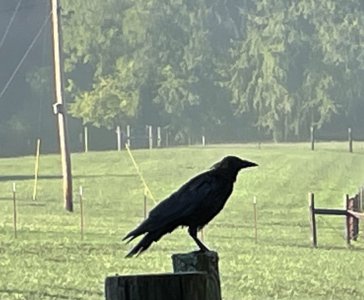RadishRose
SF VIP
- Location
- Connecticut, USA

I just loved this !!! Thanks M

We are surrounded by farmland and have had a group of three that hang out together, but have seen up to a dozen together at times. They play havoc with the smaller bird's nests and I have grown tired of them. They are intelligent, but like humans, sometimes that's not enough.Interesting reading, Meanderer, thanks....I noticed this year that
a local little 6 crow flock were gone after spring rains, and have
just returned to the area in last couple weeks....no idea where
they went but suspect out into farmlands....




